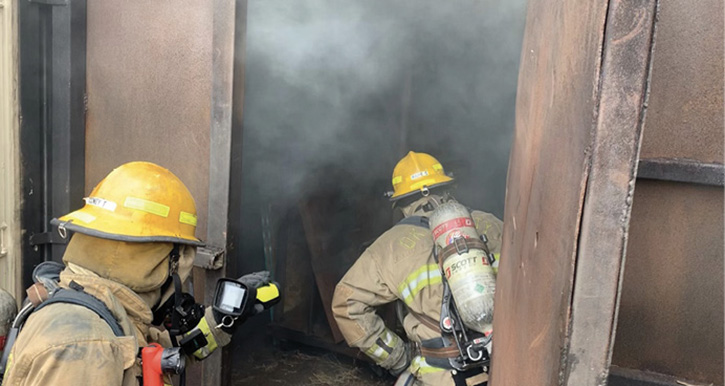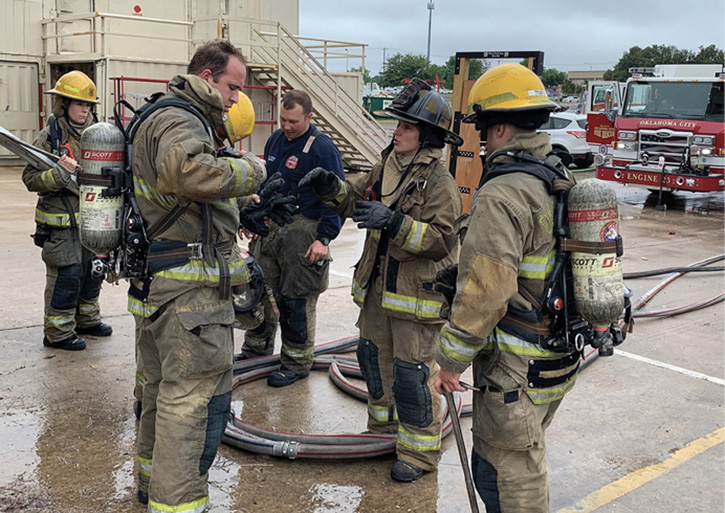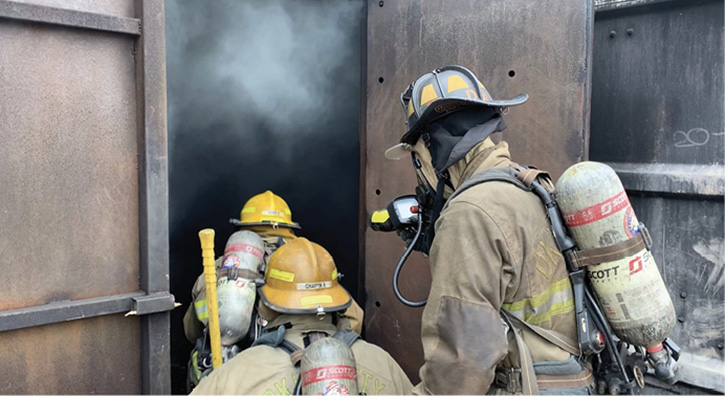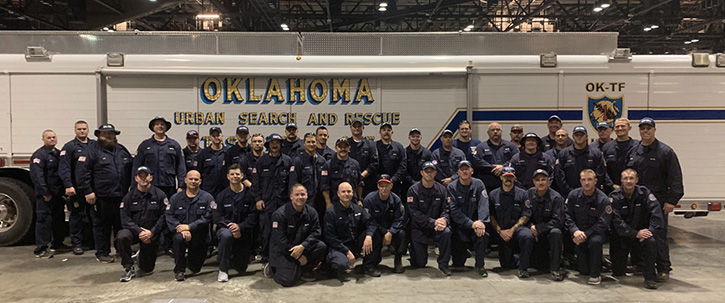
Leadership is a word thrown around often, without a care for or an understanding of its true meaning. Leadership is much more than a word; it is multifaceted and a philosophy. The philosophy of leadership is to be true to yourself, your personnel, and your organization. What makes a good leader, whether you are in an elite military unit or the fire service, may not perfectly fit into the leadership role required of the CEO of a Fortune 500 company or a local business owner. However, the core values of integrity, honesty, pride, and passion and the basic qualities of being decisive, driven, and a good communicator carry over regardless of the leader’s field. This is what makes the philosophy of leadership so difficult to define; it takes a balance of the basic qualities, traits, and core values as leaders seek the knowledge, skills, and abilities to be a great fire officer.
Leading with PRIDE
One of the most important aspects of being a leader is having pride in yourself, your organization, your mission, and your personnel. Pride can be defined as someone or something cherished, valued, or enjoyed above all others. Pride is invaluable in the fire service—a trait that all officers should possess and instill in their crews. They should have pride in their department, their apparatus, their actions, and their appearance.
RELATED FIREFIGHTER TRAINING
PRIDE AND OWNERSHIP: THE LOVE FOR THE JOB — THE COMPANY OFFICER
Using Past Lessons to Prepare Future Leaders
Inputs, Outputs, and Outcomes: Management and Leadership
Pride is not giving “rah-rah” speeches and then going about your day; it is something that you live 24/7. As an officer, your crew looks to you to set the example; they take on your personality. Accept your responsibility as a leader, trainer, coach, and mentor.

(1) Accept your responsibility as a leader, trainer, coach, and mentor. A leader is active in training and constantly teaching—before, during, and after evolutions. (Photos courtesy of author.)
Take pride in your leadership, your station, your crew’s performance and appearance, and your department. One way to learn to lead with pride is with the acronym PRIDE—Professional, Respect, Image, Discipline, Energetic. Respect for your crew and citizens is paramount in obtaining this pride. Although you must respect crew members individually as having their own strengths and weaknesses, it is your job to mesh these individuals into one strong team. You are the officer—it is your obligation to foster the growth of each firefighter. Let them have input on training scenarios and teach the subject areas that are their strengths. Respect the fact that your crew members have lives and obligations away from the fire station. Our job has many stressors, and they can be compounded by the many stressors at home. Also, look for changes in their behavior and attitude, and instill a personal trust with them by developing an open-door policy to prevent minor conflicts from developing into major problems that affect their cohesiveness and job performance.
Respect includes also recognizing the needs of your citizens. Treat their problems as if they were your loved ones’ problems. No matter the size or complexity of the problem, regardless of your opinion of the importance of the call, it was important enough for them to call you. It is your job to respond quickly and resolve the issue. You took on the obligation to serve your citizens. Show them respect and represent the fire service with pride; after all, they are the reason you are here.
Leadership is more than being placed in a position of authority based on passing an examination, assessment, or appointment by a superior; it is setting the tone for the organization and leading not just personnel but also the organization to continue current successes and guiding it into more success and growth. A leader must balance his personal life and beliefs to achieve the organization’s goals and directives while still understanding that the people he leads may come from differing backgrounds and beliefs and have a different set of goals.
This conflict can lead to a challenging dynamic in dealing with difficult conversations as a leader. These difficult conversations may amount to a simple argument among coworkers that you supervise to racial, sexual, or ethical issues that push a leader to make tough decisions that may affect the future employment of those involved or the public perception and opinion of the organization. Often, these difficult conversations are made even tougher because of the close personal relationships we build in the fire service with our fellow firefighters who may eventually become our subordinates. At the station, our professional relationship as the supervisor/employee must come first. My expectations are that I can still be a great friend while maintaining my integrity as a leader, an officer, and a supervisor, regardless of my personal relationships with those under my supervision.
Creating the Image
The image of the fire officer and his crew is a direct reflection of the entire department. It is your responsibility to portray an image of a well-trained, physically fit, and professional crew. This is not accomplished by “lip service” and pretending to be something we aren’t. It is our obligation to ensure we have the best-trained crew. This includes hands-on, scenario-based training, physical fitness, and mental health. Not only do we need to know what to do and how to do it, but we must be able to accomplish the necessary tasks, many of which are physically demanding. A high level of physical fitness allows us to perform these demanding tasks over a prolonged period. Being mentally strong and healthy is just as important to mission accomplishment as being physically strong and healthy.
A professional image also includes wearing the proper uniform that is clean and well-maintained. Personal pride in appearance instills a sense of professionalism, confidence, and positive self-image in our crew and the citizens. The image of today’s fire officer represents the pride we have in ourselves, our job, and our fellow members who have paved the way for us in the fire service.
As a fire service leader/officer, you think about tactics; knowing your fire district; and asking yourself, “Am I ready to take on all the responsibilities that go with being a fire officer?” At the fire station, we often sit around the table and discuss fire tactics. Everyone has an opinion on the “right” way to attack a given fire problem (which, obviously, is very important). However, before a fire officer begins any type of fire attack, he must first possess the ability to lead. First and foremost, a fire officer must be a leader. You can be a masterful tactician on the fireground, but if you do not possess leadership skills, your crew will not follow. You must accept the responsibility to set the example and set the tone for your crew through training, physical fitness, and public interaction. The performance of your crew depends on the level of pride and dedication you have for the job and your ability to accept your leadership role. Be the example for all to follow. True leaders lead from the front.

(2) A fire officer leads his crew during a training evolution for realistic training to assess their performance as a team and ensure crew cohesiveness.

(3) Empowering a firefighter to take the role of fire officer during a training evolution—training not only for “now” but also for mentoring younger firefighters so they are prepared for their opportunity to be the fire officer in the future.
Principles and Values
One of the biggest challenges a leader may face is learning how to balance principle- and value-based leadership. With principle-based leadership, a leader allows for structure and consistency. Here, he enforces and follows the organization’s standard operating procedures. These clearly defined rules must be followed. With value-based leadership, this allows for empathy, patience, and understanding of your personnel; a leader must find this balance. If you are too one-sided, personnel will not grow. An example of this is a department’s “late for duty” policy; this policy does not allow for interpretation. If a member arrives late, you must document and then enforce your department’s discipline policy for this infraction. This is an example of principle-based leadership. However, strictly maintaining this style leads to no interpretation or understanding as to why this individual was late. Using value-based leadership in conjunction with principle-based leadership allows you to find its root cause. By getting to know and understand the problem, you may find the reason this person was late. Lateness is often the first sign of emotional issues and distress, or the lateness could simply be a one-time issue because of oversleeping or getting a flat tire on the way to the station. Either way, it is an effective leader’s responsibility to figure out why. This is an example of balancing principle- and value-based leadership.
Being a professional is not about being paid or being a volunteer; it’s about a mindset and an attitude of service and a dedication to the profession of firefighting. It’s about continuing to lay the foundation for younger firefighters to guide their careers. It’s about reinvigorating a seasoned firefighter with your enthusiasm for the job. And, it’s about setting a standard for the future of the fire service. As a firefighter, accept your role as a professional, live it, learn it, excel at it, and love it always.
When citizens have an emergency, they expect us to show up, have an answer, and fix the problem. We are professional problem solvers, whether it is a five-alarm commercial fire, a full arrest, or a car wreck. With these expectations from the citizens, place even higher expectations on yourself and your crew. We are not only expected to have all the answers; we are expected to perform whatever tasks are necessary to mitigate the problem, which is all part of being professional.

(4) Technical rescue teams, such as OK-TF 1, can add a difficult leadership dynamic to a department because formal leadership positions on the task force do not always match up with the current fire department rank. Fire departments may have lower-ranked fire department personnel in senior leadership positions on task forces and are now supervising their senior ranking officer. An effective leader can set the example for all to follow regardless of rank or position within the team.
Discipline and Professionalism
A great quote going around the fire service is, “Every day is a training day.” We must take every opportunity to ensure we are trained to perform to the best of our abilities. Tabletop discussions and fire problem scenarios are invaluable training tools. Complement this with realistic, hands-on training as often as possible. Being professional not only involves training but also encompasses leadership traits, appearance, and physical fitness. We represent not only our fire department but the entire fire service. As a fire officer, your actions are an example to the citizens and your crew. Professionalism is key to achieving and maintaining pride in your job and your role as a leader.
A fire officer is required to have a high level of personal discipline. Maintain this discipline by keeping a high level of physical fitness, which includes diet, exercise, nutrition, and mental health, to make the right decisions. Also, adhere to the standards and regulations of your department. Your decisions may not always be popular, but you are obligated as an officer and a leader to follow department policies. Then, instill this sense of discipline in each one of your crew members. Let them know what is expected of them and demand that they uphold those expectations. Encourage them to have the inner drive and dedication to strive to be the best prepared and best trained crew in the department.
The Makings of a Leader
What makes a leader? What are the traits he must possess? Following is a list of knowledge, skills, abilities, and behaviors expected of a leader.
Knowledge. Know your stakeholders, their values and experience levels, and how to build relationships. Remember, a leader cannot truly lead unless he knows his people and has experience with the tasks he oversees. Proper decisions are based on recognition primed decision making.
Skills. Team building, setting achievable goals, listening skills, and public speaking are important because they help a leader build a team and work toward a common goal. Also, listen and hear what is going on around you, know what your crew needs to succeed, and listen to them when they have advice for you. You must be able to speak; a leader can lead by actions, but a true leader must also inspire with his words and be prepared to deliver verbal messages of encouragement, inspiration, and orders.
Abilities. Ensure success by setting goals for yourself and others that are smart, measurable, achievable, realistic, and timely. Hone your skills to organize, work under pressure, and make decisions. The ability to organize your thoughts and complete “to do” items in a timely manner is a sign of leadership and allows a leader to focus on other issues. A leader must also make decisions without fearing the responsibility of making decisions.
Behavior. Confidence, open-mindedness, and humility are important behaviors. This confidence means understanding what it takes to do the job with the personnel an officer leads. He must be open to new ideas and know that there is more than one answer to every question. When dealing with people, a leader must be open-minded to changing his mind and direction. Humbleness is vital here. Leadership is not measured in accolades; it is measured in positive, safe, and efficient results.
The energy with which you show up to work each day is a direct reflection on your dedication to the job. Everyone has good and bad days, but the minute you walk into the fire station, you have an obligation to perform at your best. When citizens dial 911, they don’t want our second-best effort. The citizens expect us to be the hero, regardless of our personal issues.
Your crew will see through a false energetic attitude; to be an effective fire officer, you must truly love this job. Your attitude affects not just your personal performance but also the performance of the crew. An upbeat and energetic attitude increases morale and productivity.
I don’t expect personnel to train and go, go, go 24/7 at the station. Downtime and rest around the station are necessities because of high call volumes and everyday job stresses. This relaxation time reinforces camaraderie and helps forge personal relationships among the crew, strengthening the bonds of the firefighter brotherhood/sisterhood. However, when it is time to respond to a call or train, the mindset needs to be on mission accomplishment through teamwork, safety, and discipline. Whether it is an effective and a productive training session or a successful completion of tasks at a call, an energetic attitude of a fire officer directly impacts the attitude and performance of his crew.
Making Choices
Leadership is also knowing what is right and then doing what is right, regardless of the circumstances. Your crew looks to you for guidance, so take pride in knowing that you can shape, mold, and mentor firefighters to achieve their best. A leader does not merely lead by words; his actions speak loudest. You are obligated to the citizens you serve to ensure your crew is trained physically and mentally for the job. So, be an active participant in training with your crew. Don’t just sit back and watch them train. The only way to lead effectively is to lead from the front. Do not neglect or hide from responsibility no matter how difficult the situation. Maintain an attitude and tone appropriate for the given situation.
It has often been said that people respect the person, not the rank. Obtaining the rank of fire officer is so much more than just a pay raise and pinning shiny gold bars on your uniform; it is all about leading a crew and making an impact on the fire service. The fire service is like a family tree: Each firefighter under your command represents you. As they progress in their career and move up in rank, that tree branches out more and more. “Your” firefighters then will impact others and, in turn, your leadership will affect and impact many more firefighters for years to come. Be an example that all will admire and look to follow.
Your leadership should foster what younger firefighters strive to be. Consider what your impact will be not just today or tomorrow but 40 to 50 years down the road. Don’t do this so people know your name, but so your leadership, drive, determination, and training lead others to do the same. The recruit you train today will be a future officer, so pass along that leadership knowledge to him, which will then be passed on further. Do not take this aspect of leadership lightly; you should accept and relish the fact that you can have a lasting impact on the future of your organization. Yes, you will make mistakes along the way (we are all human). A leader accepts responsibility for his actions—right or wrong. He takes charge of the situation and makes a decision. Leaders cannot be “fence riders.” When faced with a situation, whether a fire scene, a medical call, or a personnel issue at the station, make that decision!
Never lose sight of why we are here: to protect our personnel and serve the citizens of our community to the best of our abilities. My idea of a “perfect” firefighter is not based on size or strength; it is about finding those people with the heart, motivation, and dedication to serve and commit to giving it their best. It is our job as leaders to bring that out in our personnel and foster growth in those who already display these characteristics.
The philosophy of leadership is diverse, vast, and difficult to put into words. There are many elements to consider when thinking of quality leadership and finding your own leadership style. As I study more on this subject and look at leaders throughout history, I realize there is a base core value of a leader and his traits. However, in those traits, we all must find our own way by being true to ourselves. We can learn, grow, and adapt our leadership style by studying the philosophy of leadership. Innate in all of us are unique qualities that make us who we are. It is our job to find our inner strengths, grow with them, identify our weaknesses, and seek personal and professional growth to improve these weaker areas.
I am proud to be a leader in such a great organization and profession. I will continue to strive to be the best I can in all areas of leadership and bring out the best in all those under my charge. Pride in being a firefighter and fire officer is essential to be an effective fire service leader. This pride and the ability to lead are demonstrated in professionalism, respect, image, discipline, and energy. Have pride in your job and your position as a leader of the people who will represent the future of the fire service. Lead from the front!
GREG MERRELL is a major with the Oklahoma City (OK) Fire Department (OCFD), assigned as a station officer and ride-out district chief officer. He previously was assigned as the OCFD’S station/company officer with the technical rescue and hazmat response stations. Merrell is also a task force leader with US&R OK-TF 1 and has deployed to multiple events as OK-TF 1’s rescue team manager, including flood and tornado responses. He has 12 years of fire/rescue instruction experience and has trained firefighters, technical rescue teams, emergency medical services personnel, law enforcement, US&R teams, and military personnel throughout the United States. Merrell also served on active duty in the U.S. Army as a UH-60 Blackhawk helicopter pilot in command, a unit trainer, and an aviation safety officer.

